
Research
The links will take you to internal pages about the the Devereaux Group research concentrations.
Angle-Resolved Photoelectron Spectroscopy
Angle Resolved Photoemission Spectroscopy (ARPES) is a valuable tool for probing the electronic structure of materials. Over the past 20 years, with steadily improving momentum and energy resolution, ARPES has provided insights into the physics of many important materials such as the high-Tc superconducting cuprates, colossal magnetoresistive manganites, titanates and most recently, the newly discovered superconducting iron pnictides.
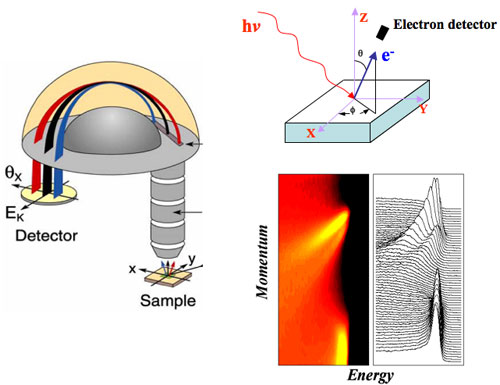 .
.
Fig 1: Top right: A cartoon of the photoemission process and experimental setup of a typical ARPES experiments. Left: The geometry of the electron detector showing the energy filtering process. Bottom right: Sample ARPES spectra in energy-momentum space. Bright areas indicate energy and momentum values where high photoelectron flux is observed and correspond to the bandstructure of the material.
ARPES is a photon-in electron-out spectroscopy based on the photoelectric effect. An incoming photon, generated in x-ray sources or laser systems, is directed at a sample where it is absorbed. If the photon supplies sufficient energy to the electron it can overcome the work function and exit the sample as a photoelectron. A movable detector, equiped with an energy filter, captures the photoelectrons in a specific energy range and solid angle. Using conservation of momentum and energy, one can then deduce information about the electron's initial momentum, energy and lifetime and therefore information about the underlying electronic structure. Applying this technique to many body systems, where the electronic structure is not well described by conventional band theory, has provided important insights into many-body physics. Our group, using combinations of numerical and analytical techniques, has been working to understand the wealth of results coming from this technique through close ties with experimentalists; our group is presently collaborating with ARPES researchers from the University of British Columbia, Denver University, UC Berkley and Stanford.
In the context of the sudden approximation, ARPES data can be interpreted as a direct measure of the single-particle spectral function: A(k,w):
 .
.
The spectral function is a fundamental quantity in many-body physics that provides energy and
momentum space information about the occupied and unoccupied single-particle states. Here,
A(k,w) has been expressed in terms of a 'self-energy'  (k,w)
which encodes information about how particles are dressed by their interactions with the remainder of the system.
The real part of the self-energy gives the shift of the particles binding energy while the imaginary part is related
to the lifetime of the particle's state. Finally,
(k,w)
which encodes information about how particles are dressed by their interactions with the remainder of the system.
The real part of the self-energy gives the shift of the particles binding energy while the imaginary part is related
to the lifetime of the particle's state. Finally,  (k) is the
bare electronic dispersion of the sample without interactions. We can now look at some examples of ARPES
measured spectral functions.
(k) is the
bare electronic dispersion of the sample without interactions. We can now look at some examples of ARPES
measured spectral functions.
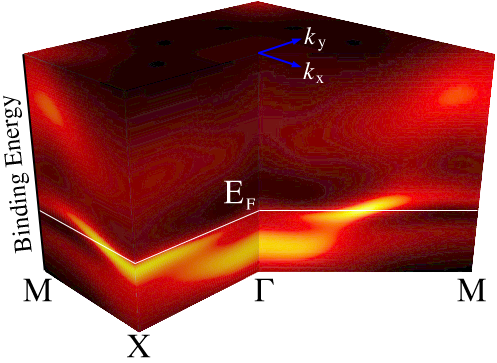 .
.
Fig 2:An example of the spectral function A(k,w) for the single-band Hubbard model along high symmetry cuts in the first Brillouin zone. ARPES is sensitive to the spectral function for binding energies only below EF.
Low-Energy Kinks: Electron-Phonon Coupling
Figure 3 presents a series of experimentally measured and theoretical spectral functions near the Fermi level of the double-layer High-Tc superconductor Bi2212 (indicated by the red bars). At low binding energy 'kinks' are readily observed in the bandstructure and these features have been observed in many other cuprates, always with the same universal energy scale. These kinks arise due to coupling between the electrons and a bosonic mode(s) whose identity is of great interest since it is likely playing a key role in the cuprates and may be directly related to the pairing mechanism. The strength of the kink shows a distinct momentum dependence, strengthing as one moves from the nodal to anti-nodal regions of the Brillouin zone.

Fig 3: Calculated (upper panels) and measured (lower panels) ARPES spectra for Bi2212 along various directions in momentum space as indicated in the right most panel. For each cut, data for the normal (left) and superconducting (right) states are shown. More information can be found in Reference 2.
Our group has developed a model for these low energy renormalizations in terms of coupling between the electron and a spectrum of bosonic modes. Because of the underlying symmetries of the atomic orbitals of the CuO2 plane and the phonon eigenvectors, the electron-phonon coupling matrix elements have a strong momentum dependence and different modes are being highlighted in different regions of the Brillouin zone. We have also examined the temperature and doping dependence of these features and the evolution of the single-particle self-energies closely matches careful ARPES studies.
High-Energy Anomaly or Waterfalls: Electron Correlations
For strongly correlated systems - where the Coulomb interaction is strong and cannot be neglected - the evaluation of the spectral function is complicated by the interactions between the particles. As such, simple approximations that are useful for weakly interacting systems begin to breakdown and new approches must be employed. These strong interactions produce dramatic changes in the spectral function which have been observed in the electronic dispersion of the cuprates at large binding energies; this is the so called 'high-energy anomaly' (HEA) or 'waterfall'.
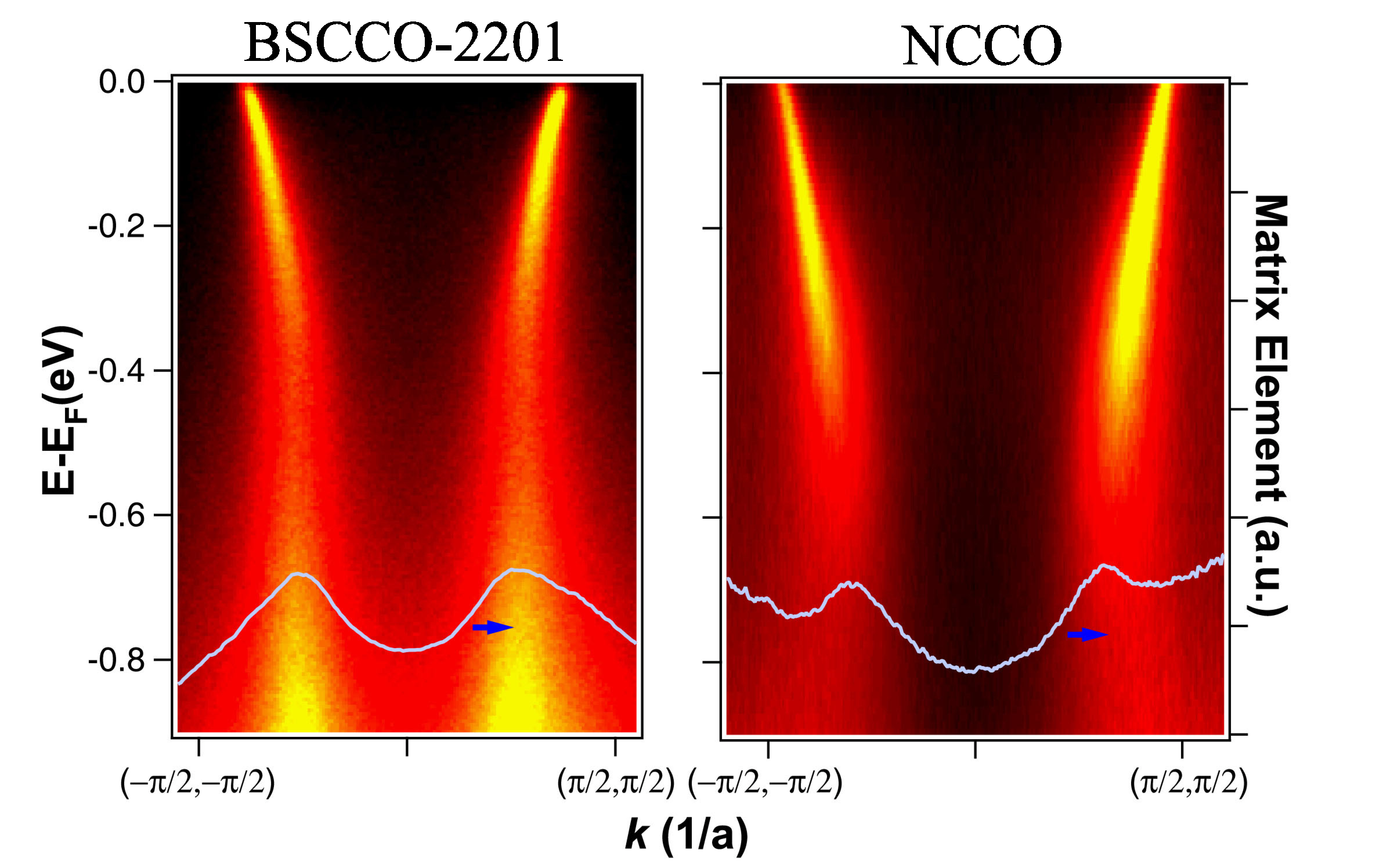
Fig 4: Spectral function along a nodal cut for a hole (left) and electron (right) doped superconductor near optimal doping showing the HEA.
Using determinant quantum Monte Carlo (DQMC) techniques we have been able to make direct contact with ARPES measurements in the cuprates for both hole- and electron-doped materials as well as the half-filled parent insulators. Below is summary of the calculated spectral functions derived from our simulations for the electron- and hole-doped single-band Hubbard model. Notice the non-trivial renormalization of the electron dispersion leading to the break-up or anomaly/waterfall at intermediate binding energies. These features mirror the results of recent ARPES experiments on doped cuprates.
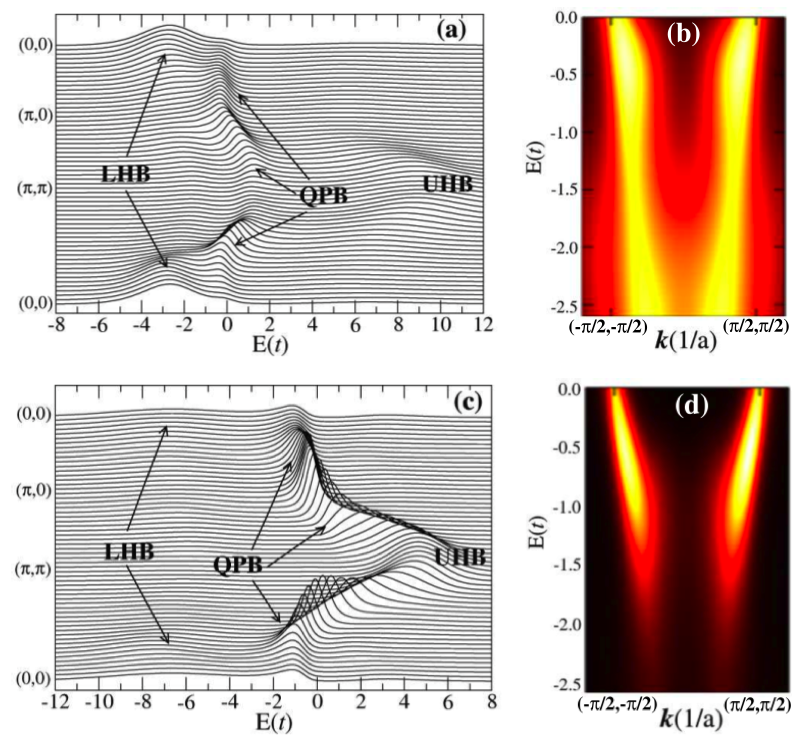
Fig 5: Calculated spectral functions for the 14 percent hole- and 16 percent electron-doped single-band Hubbard model. Determinant quantum Monte Carlo was employed to handle the Hubbard model while maximum entropy methods (MEM) were used to perform the analytic continuation. Further details can be found in Reference 8.
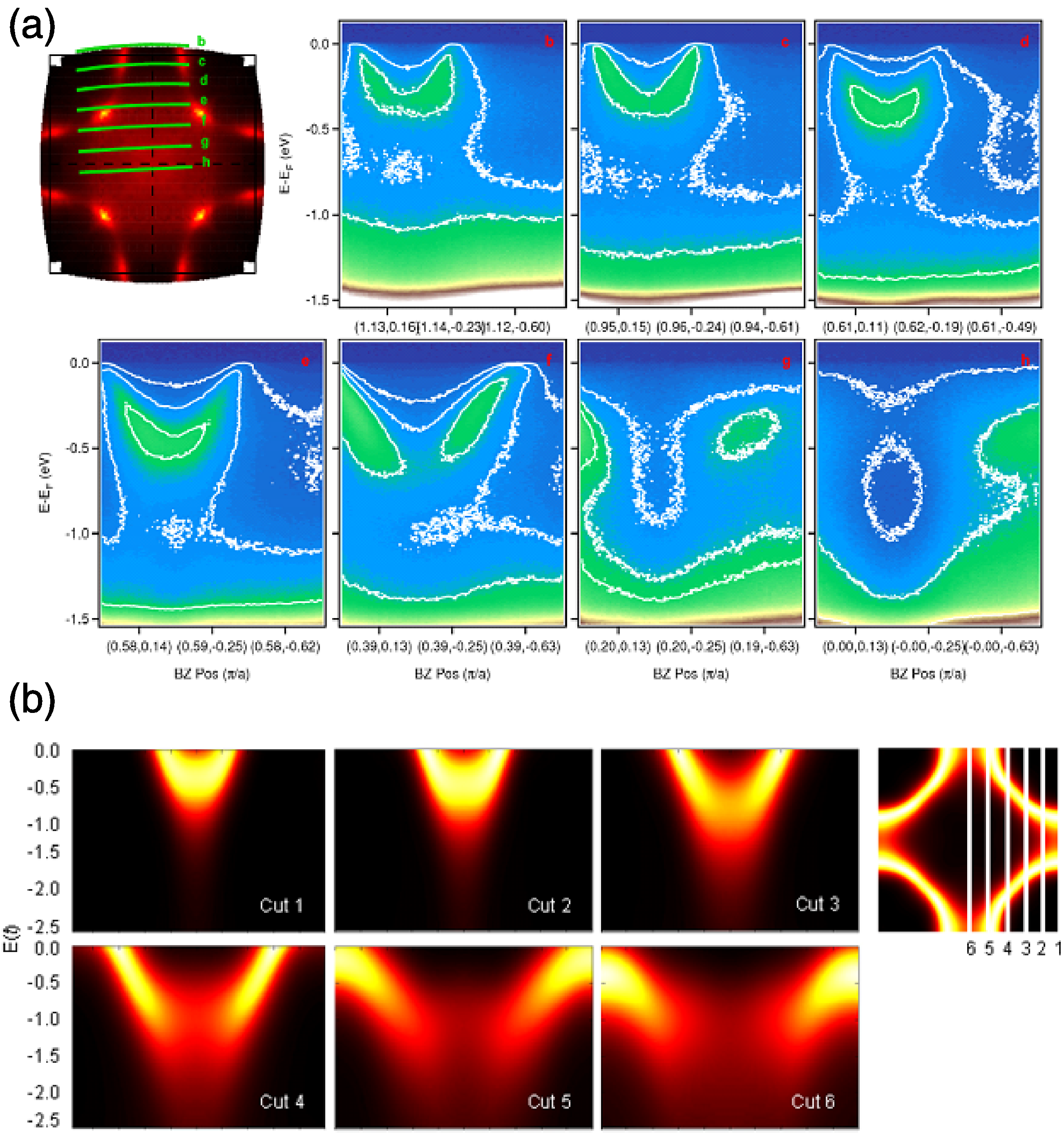
Fig 6: Comparison between experiment and theory along different cuts in the Brillouin zone showing evolution of the HEA as a function of momentum in the electron doped material. Note that no additional ARPES matrix elements have been included in the results from simulation.
References and Further Reading
- A. Damascelli, Z. Hussain, and Z.-X. Shen, Rev. Mod. Phys. 75, 473-541 (2003).
- T. Cuk et al, Phys. Rev. Lett. 93, 117003 (2004).
- T. P. Devereaux et al, Phys. Rev. Lett. 93, 117004 (2004).
- T. Cuk et al, Phys. Stat. Sol. (b) 242, No. 1, 11-29 (2005).
- W. S. Lee et al, Phys. Rev. B 75, 195116 (2007).
- W. S. Lee et al, Phys. Rev. B 77, 140504(R) (2008).
- W. Meevasana et al, Phys. Rev. B 75, 174506 (2007).
- B. Moritz et al, New J. Phys. 11, 093020 (2009).
- F. Schmitt et al, Phys. Rev. B 83, 195123 (2011).
